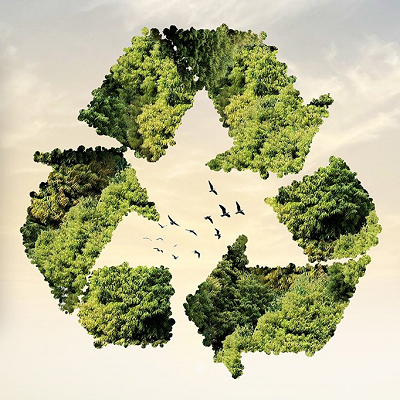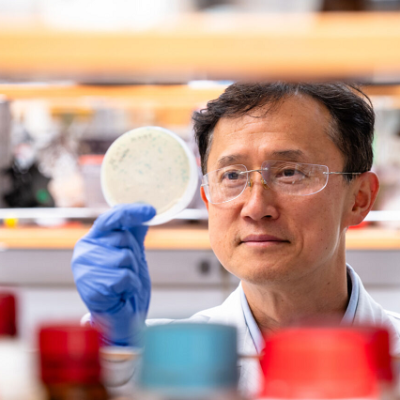The causes of water pollution are diverse, ranging from industrial activities, agricultural runoff, and improper waste disposal to urban development and the release of harmful chemicals into water bodies. These factors contribute to the contamination of drinking water sources, jeopardising public health and ecosystem integrity.
In response to these challenges, innovators, industry partners, investors, governments, NGOs, charitable organisations, and researchers are actively pursuing innovative solutions in water remediation, with nanotechnology emerging as a prominent field of study. Nanoscale innovation offers tremendous potential in addressing the issues of water pollution and purification due to its unique properties and applications.
Innovative Solutions for Addressing Water Pollution Challenges
Notable advancements have been made, exemplified by the pioneering efforts of Xylem Inc. Based in Washington DC as a leading global water technology company, Xylem focuses on providing innovative water and wastewater treatment solutions.
With a strong emphasis on sustainability and addressing water-related challenges, Xylem has leveraged nanotechnology to develop advanced water filtration systems. These systems incorporate nanomaterials and nanoscale structures that efficiently remove contaminants from water sources, thereby improving overall water quality.
By harnessing the unique properties of nanotechnology, Xylem's filtration systems have demonstrated enhanced efficiency in purifying water and ensuring the delivery of clean and safe drinking water to communities worldwide.
Water Purification Breakthrough Applications Using Nanotechnology
Nanotechnology involves manipulating and utilising materials at the nanoscale, typically in the range of 1 to 100 nanometers. Researchers have made significant breakthroughs in using nanomaterials, such as graphene oxide and carbon nanotubes, to develop highly efficient water purification methods. These nanomaterials possess remarkable adsorption properties, enabling them to capture and remove contaminants from water sources selectively.
Researchers have achieved enhanced water purification capabilities by incorporating these nanoparticles into filtration systems. These nanotechnology-based filtration systems efficiently remove heavy metals, organic compounds, and other pollutants from water. The use of nanotechnology in water purification holds the promise of providing clean and safe drinking water by eliminating harmful substances and improving the overall quality of water sources.
Barriers to Entry in Water Purification
While nanotechnology holds immense promise, several barriers exist to its widespread adoption. Challenges include training issues, bacteria control, poor monitoring and record keeping, equipment design and specification, and maintenance problems.
More training of water treatment operators can ensure their ability to operate and maintain the systems properly. Inadequate bacteria control measures may lead to contamination and health risks. Poor monitoring and record-keeping practices hinder identifying and resolving water quality issues. Inappropriate equipment design and specification can result in suboptimal performance and higher maintenance needs. Neglected maintenance can lead to equipment failures and reduced treatment efficiency. Addressing these challenges through comprehensive training, robust monitoring systems, appropriate equipment design, and proactive maintenance strategies is essential for improving water treatment operations.
Market Size in Water Purification
The global market for water purifiers, encompassing water purification systems, is poised for substantial growth, with estimations suggesting a rise from USD 30.62 billion in 2022 to USD 50.66 billion by 2029. This surge directly responds to the escalating global demand for clean and safe drinking water, fueled by population growth, rapid urbanisation, and heightened awareness of waterborne diseases.
As communities become more conscious of water quality and the significance of reliable water supply, the market expansion opens up lucrative opportunities for manufacturers and providers of innovative water purification technologies and solutions. These advancements aim to meet the evolving needs of consumers worldwide and address the persistent challenges associated with ensuring access to pure and secure water.
Industry and Academic Insights in Funding Water Purification
Under the Desalination and Water Purification Research program, the Bureau of Reclamation, based in Washington DC, has granted funding to support 15 projects. These research initiatives aim to develop innovative solutions that effectively address water treatment challenges by reducing costs and enhancing performance.
Research and Development Program Manager Ken Nowak said, "Developing new technologies that can treat currently unusable water will help communities worldwide." He continued, "These technologies have the potential to increase water supply flexibility under the risks of climate change and drought." Mr Nowak's remarks highlight the significance of advancing research and development efforts in water treatment to address pressing challenges and ensure a sustainable water future for communities globally.
Impact on Everyday Lives
The adoption of nanotechnology in water remediation, specifically in disinfection and water purification systems, will have a profound and transformative impact on the lives of everyday people. With the integration of nanomaterials in water filters and treatment processes, the accessibility and availability of clean and safe drinking water will significantly improve, especially in regions grappling with industrial pollution or limited infrastructure. The application of nanotechnology in water remediation holds immense potential to enhance public health by reducing water-related diseases and improving overall water quality. By harnessing the power of nanotechnology, we can pave the way for a more sustainable future, ensuring that communities worldwide have access to an abundant supply of fresh and pure water.
Environmental Implications
Nanotechnology in water remediation also poses environmental considerations. While nanoparticles can effectively remove contaminants, their potential long-term environmental impact is a subject of ongoing research. It is crucial to ensure that nanoparticles do not harm aquatic ecosystems or introduce unintended environmental consequences during their application.
Revolutionary Approaches to Tackling Water Pollution
Aquaporin, a Danish company leading the way in biomimetic membrane technology, is redefining the landscape of water purification with its groundbreaking approach. By harnessing the power of nanotechnology, Aquaporin has created membranes that draw inspiration from the remarkable water channels found in biological systems.
These aquaporin-based membranes not only emulate nature's design but also exhibit unparalleled efficiency in water filtration. Aquaporin's innovative solution sets new industry standards in water treatment, offering a sustainable and highly effective method for obtaining clean water. The company's pioneering work is paving the way for a future in which access to safe and pure water becomes a fundamental right rather than a luxury.
Read the original article on Nano Magazine.







